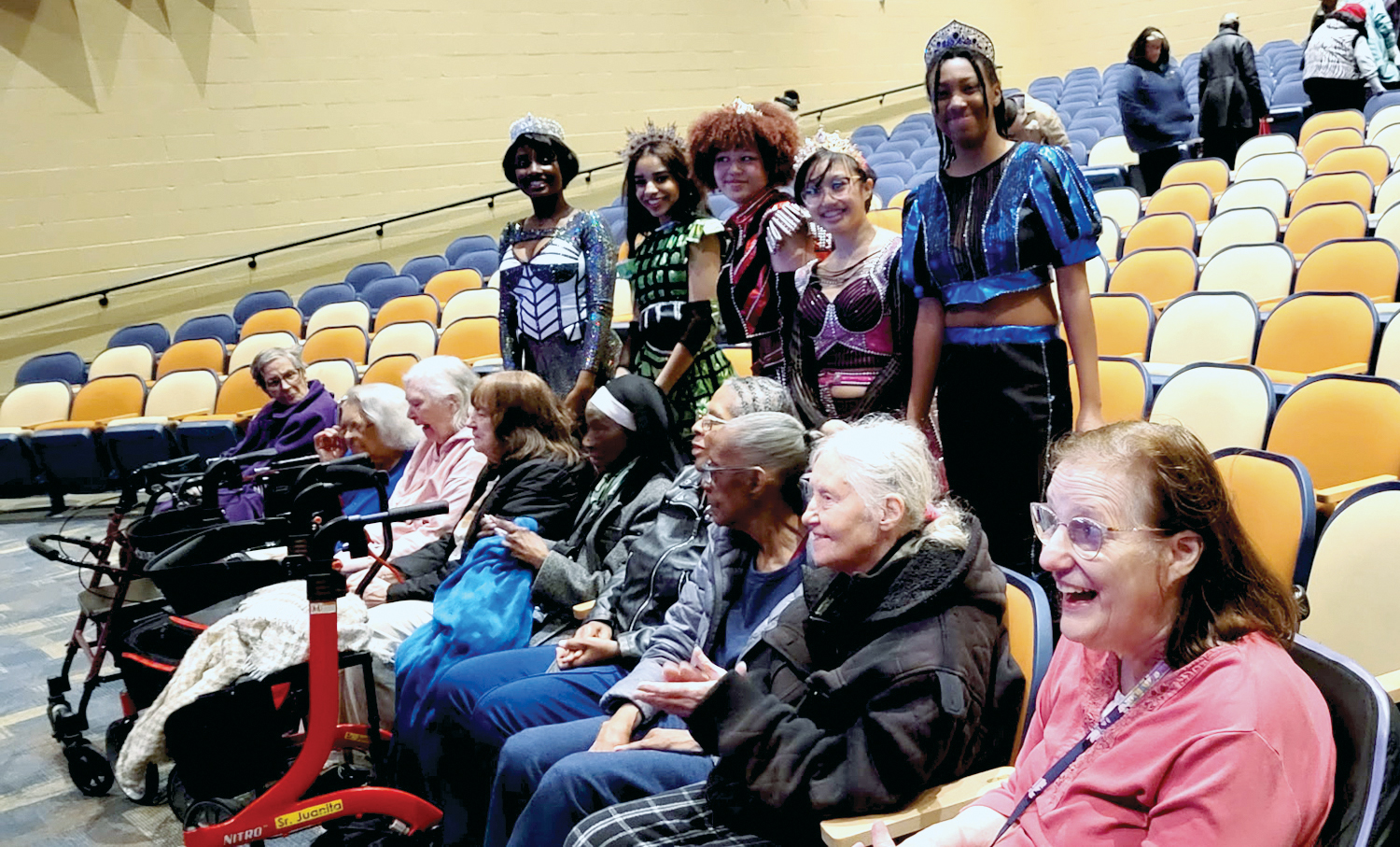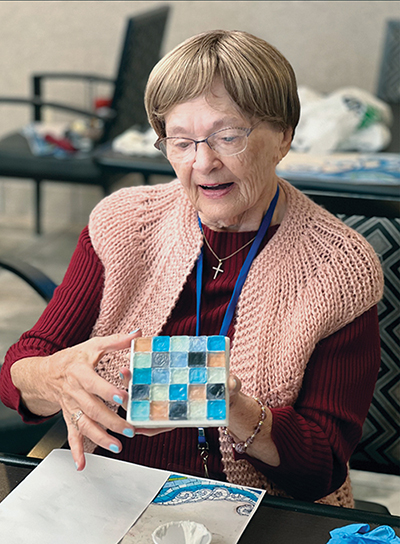
Dellora Schmidt enjoys the annual cruise that sails from Benedictine Living Community — Bismarck. Over the past three years, as winter has gripped North Dakota, she has joined fellow residents on the virtual voyages, the first to Italy, the next to Hawaii and the third, this year, to several European ports.
During the cruise weeks, decorations transform community spaces into a luxury liner's deck and window views into tranquil ocean scenes. Residents can flit between on-ship activities like a captain's dinner — sequins and suits encouraged — and off-ship outings such as a tour of the ornate Our Lady of Victory Chapel at St. Mary's Central High School in Bismarck. The cruise directors, the community's staff, also make use of virtual reality technology to teleport the landlocked travelers on sightseeing excursions.
Schmidt says the cruises remind her of her many travels with her now-late husband back when she could roam without the assistance of a walker. "The staff here is wonderful putting on these activities," Schmidt says. "I know they work a long, long time."
The cruise week in Bismarck is an example of the many innovative ways long-term care communities across Catholic health care are engaging residents. Activity planners say they don't want to just keep residents occupied, they also want to offer learning opportunities and new experiences. Often, they welcome loved ones and staff to join.
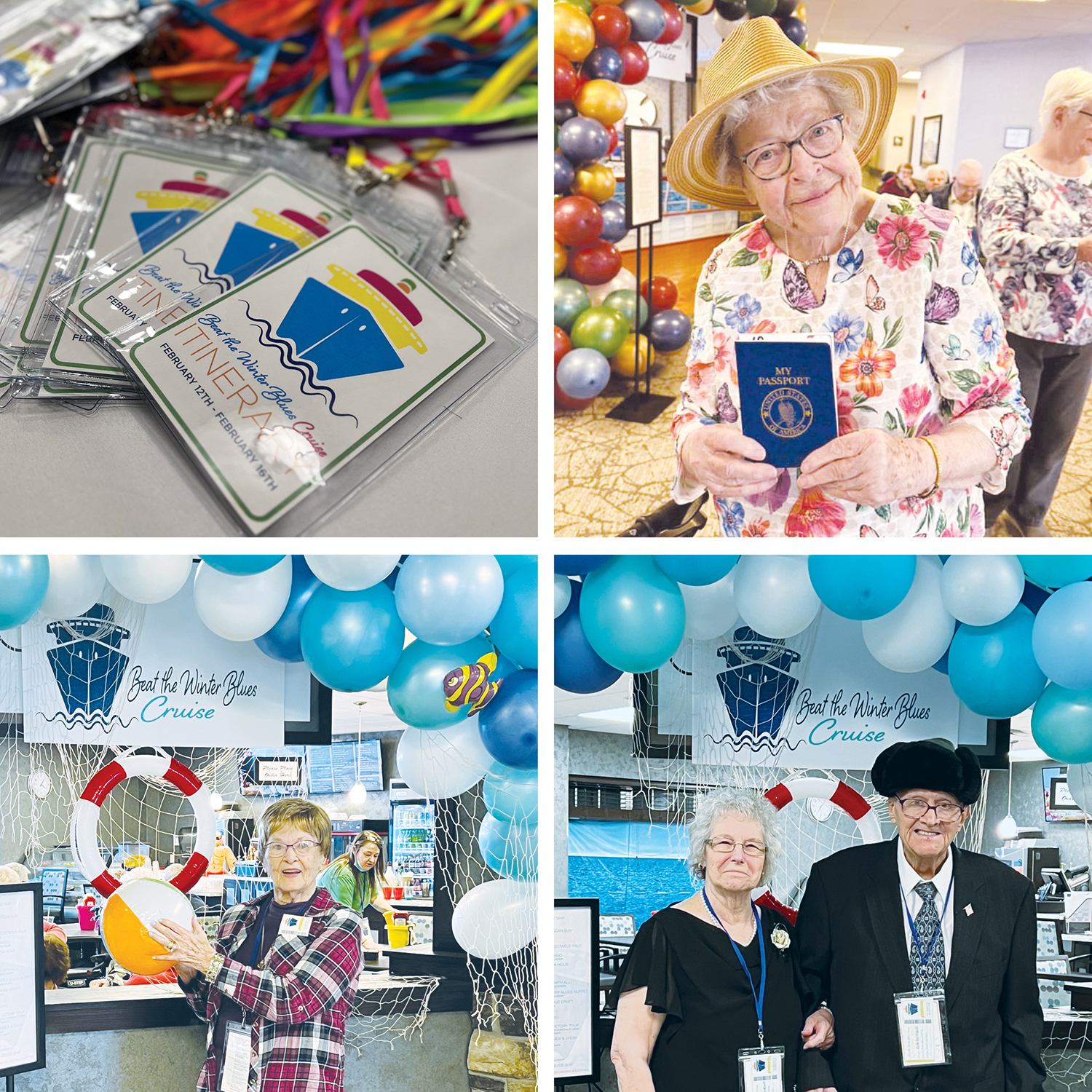
Getting out, giving back
At Jennings communities in Northeast Ohio, activities include educational programing arranged in partnership with local colleges, such as a two-day lecture series on the lead-up to Jesus' crucifixion. The lectures pair well with a "walk-thru Holy Week" display in a dining hall at which residents and staff reenact Jesus' final hours — including the Last Supper and the carrying of the cross.
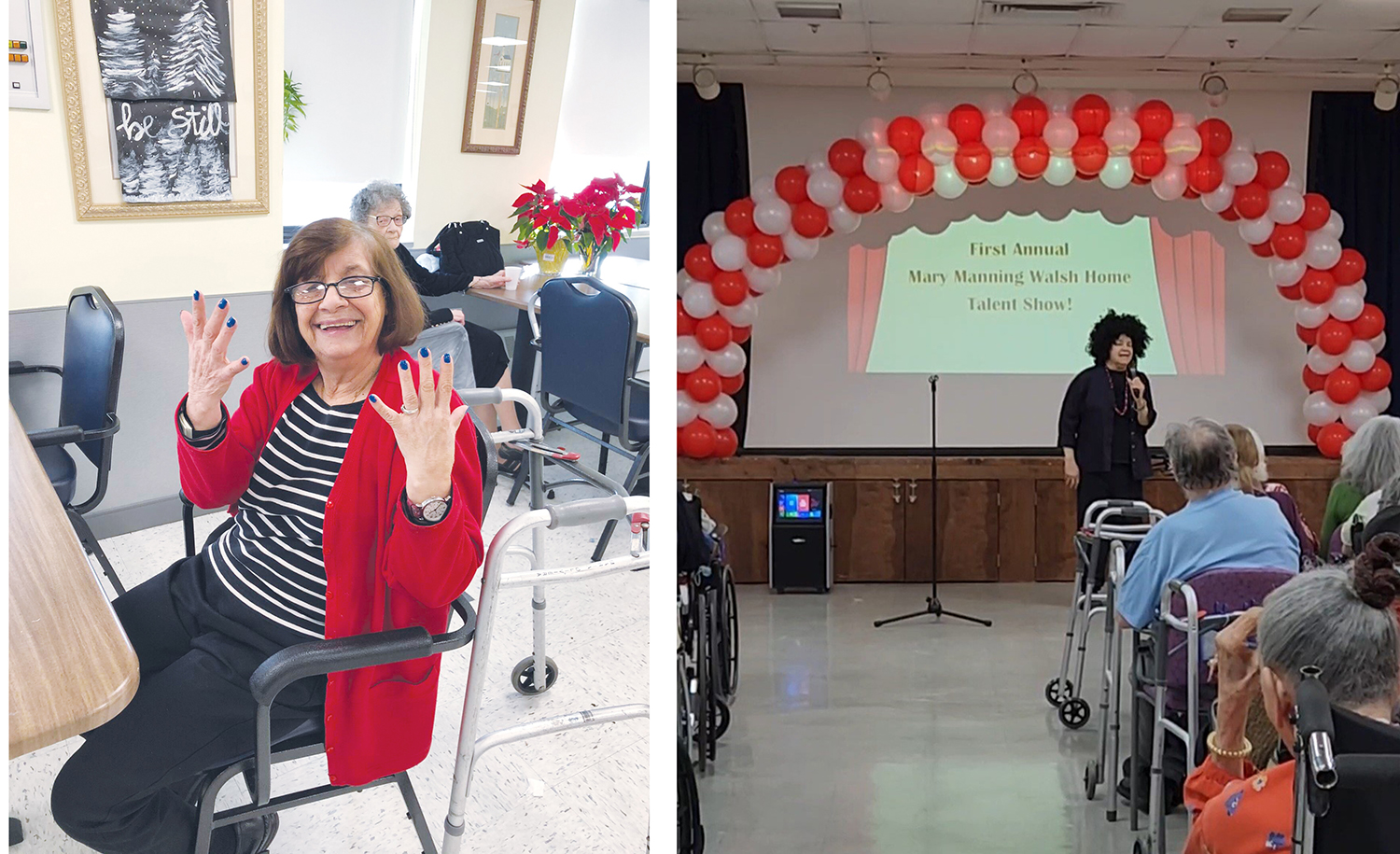
In addition to in-house activities, the community arranges off-site outings such as to pick apples, attend plays and check out holiday light displays.
Danielle Paluscsak, director of life enrichment at Jennings' Garfield Heights campus, says many residents are working class folks who had little time or opportunity earlier in their lives to pursue their interests as they were raising families and eking out a living. Most of the residents have experienced painful losses — their independence, their homes and their loved ones.
"They come here thinking and feeling like this is their last stop, and they can be very sad about a lot of things," Paluscsak says. "Just empowering them to see their potential that they still have left and challenging them to find new things that they've never done before, it's very rewarding."
She is especially proud of a small group of nursing home residents who call themselves the Silver Stars. With Jennings providing supplies, the women meet several times a year to assemble bags of hygiene items for a crisis center and sack lunches for a shelter. "This group of ladies, they love to give back," Paluscsak says.
Events evolve, goal unchanged
At ArchCare's Carmel Richmond Healthcare and Rehabilitation Center on Staten Island in New York, a popular past activity was a high school-themed week with a prom and graduation.
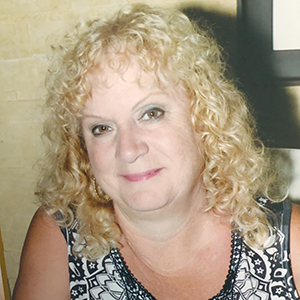
Vera Cicero, director of therapeutic recreation at Carmel Richmond, says a 100-year-old resident broke into tears when she was handed a staff-made diploma. "I said, 'What's the matter?'" Cicero recalls. "She said, 'I have to show this to my children. I never graduated high school, and now I have a diploma to show them.'"
This year, Carmel Richmond is planning a Las Vegas-themed week that will include a casino, a speakeasy and a murder mystery with audience participation.
Cicero started at Carmel Richmond 44 years ago and for 30 years her work has involved planning activities, such as discussion groups, exercise sessions, movie screenings and games, including the always-popular bingo.
Carmel Richmond's activities have evolved along with the interests of residents and to reflect popular trends, such as meditation gatherings and "spa Fridays" with manicures, but Cicero says the goal remains the same. "You want to satisfy residents' needs, not make them feel that they are in a nursing home and this is the end all," she explains. "You want them to be involved, to make new friends."
Assessing abilities and interests
When a new resident arrives, Cicero interviews them to assess their abilities and learn about their interests. She uses those sessions to inform her planning and how she might draw out individual residents. Some residents are social butterflies who delight in parties, while others are better suited to quieter engagements such as a card game or prayer time in their room. "You need to treat everybody differently, individually," Cicero says.
At ArchCare's Mary Manning Walsh Home and Rehabilitation Center on the Upper East Side of New York, a new event was on the calendar this spring: a paint-and-sip gathering at which residents and staff could brush up on their artistic skills while enjoying each other's company and a favorite beverage.
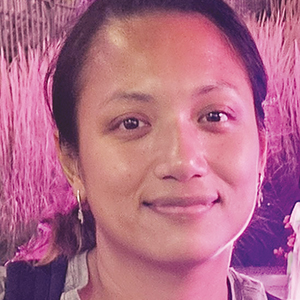
Lisa Hong, Mary Manning Walsh's director of therapeutic recreation, says she is mindful that activities should be more than time fillers. "We're not doing a program or activity just to do it," Hong says. "We have to spark interest and within that interest, spark a goal, whether it's increasing their emotional, their physical, cognitive, spiritual or social aspects."
Among the activities she coordinates is a travel club led by volunteers. Members watch a documentary about a destination and then discuss the place. Hong says the club encourages residents to be verbal, social and attentive. She sees the discussions as a form of "reminiscence therapy," which encourages residents, especially those with cognitive impairments, to recall and share their life experiences and memories.
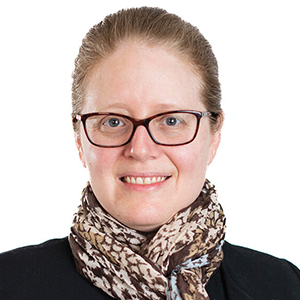
Individual and intergenerational benefits
Dee Pekruhn is director of life plan communities services and policy and Kirsten Jacobs is vice president of shared learning initiatives at LeadingAge, the association of nonprofit, mission-driven providers of aging services. Earlier in their careers, both had positions at long-term care communities that involved activity planning. Now they help create resources and offer guidance on how to ensure that residents have active, fulfilling lives.
Pekruhn says meaningful activities are a vital part of holistic care at long-term residences. Among the potential benefits are reducing residents' need for medications and curbing behaviors that challenge families and staff.
"What we know from research, from observation and from anecdote, all of it together, is that when people feel purpose with meaningful engagement and are able to pursue and learn and be creative, everything else gets better," she says.
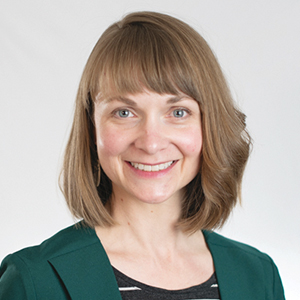
She says the activities that planners offer residents shouldn't be static. "It's as important to reintroduce yourself to the person over time, check in and see how they're doing, how and what has changed, what skills and abilities have they demonstrated that maybe they want to grow," she advises.
Jacobs notes that activities provide opportunities not only to keep residents from feeling isolated, but also for them to maintain and build connections. Inviting relatives and community members to events can create shared experiences that bridge generations, she says.
"We know there's huge benefit, and it's reciprocal benefit for people living in a care community and for the young people who may be able to engage with them," Jacobs says.
An annual highlight
At Benedictine Living Community — Bismarck, cruising is far from the only activity. In May, there was a tea party with fine china and elegant hats. Last fall, Camp Benedictine offered a week of campout-type adventures complete with campfires, sing-alongs and s'mores.
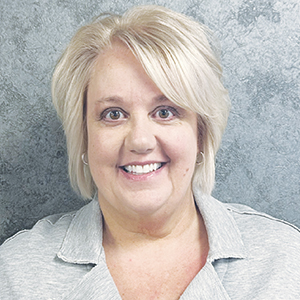
But cruise week ranks as a highlight of the year, says Lorrie Somers, the community's sales manager, who helped come up with the idea. While most activities draw a dozen or so participants from among the community's 106 residents, the events that are part of the high-sea adventures tend to get three times as many.
Somers cites cruise week and the many other events when she meets with potential residents. "They're always so worried about losing their independence," she says. "Well, really, when you're here in the community, you gain so much independence, because you have that ability to try some of these fun things, to go on these outings."
